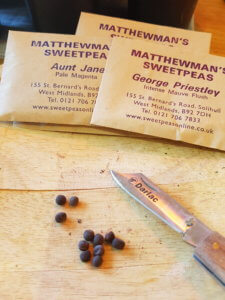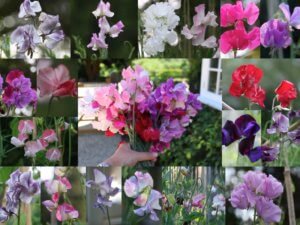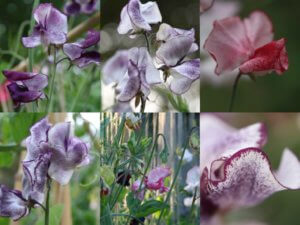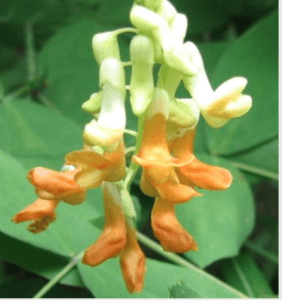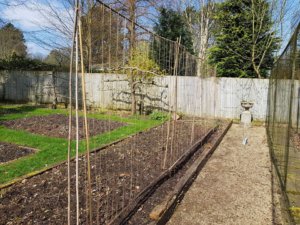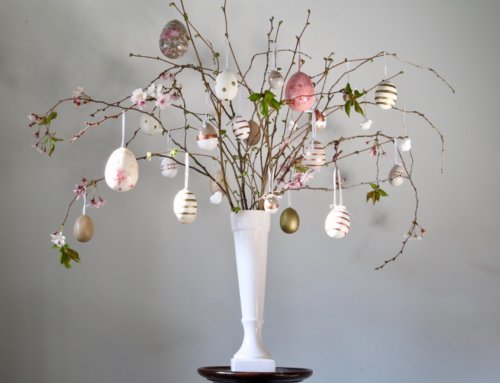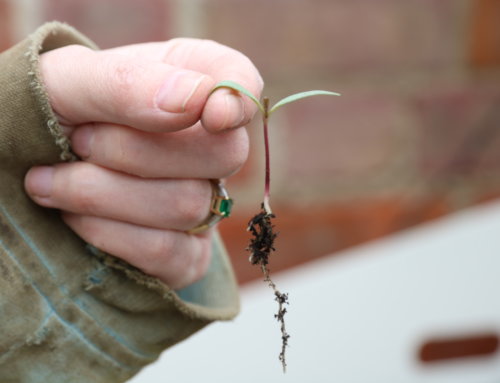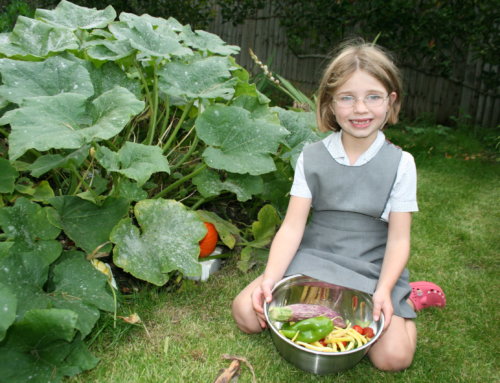They are the ultimate cut flower for the home grower but how do you choose which sweet peas to grow? The colour variations and alluring scent make them universally loved but the range of seeds available is bamboozling. Make the right choices and you’ll have a garden and home full of colour and scent. Give a friend a posy of sweet peas and they’ll love you forever.
In this article I describe the different varieties available to buy and grow and how to choose. Most are annual varieties – that is they grow, flower and set seed in one season. Annual sweet pea seeds therefore need buying each year, although you can try collecting seed from your plants for next year. Sweet peas also have some species perennial varieties which come back every year. These tend to have smaller flowers and smaller colour ranges so my main focus here is on annuals.
Bountiful posies all summer-long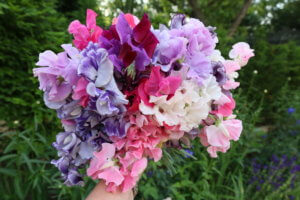
The very factors that makes sweet peas imperfect as blooms for mainstream florists make them ideal for the home grower. Sweet peas want to set seed and are quick from bud to seed pod. Once they have started setting seed they will stop flowering, having fulfilled their need to procreate. So the home grower must keep picking them and the more you pick the more flowers will follow. You’ll have vases and vases for your own home and to give away to friends.
Sweet peas are therefore the most rewarding cut flower to grow.
Where to buy sweet pea seed
This is the fun bit. By all means browse the stands at your local garden centre but to get the best ranges and the perfect flower for you it’s worth spending some time looking online at larger brands or smaller specialist suppliers. Bigger brands have good ranges – Unwins and Marshalls stock good ranges of well-tested individual sweet peas and sweet pea collections, as do Sarah Raven.
Recently, however, I’ve started buying from small local UK suppliers, specialists in their field. The UK has a good heritage of smaller farm or market-garden style suppliers, which I believe are worth supporting for their interesting ranges and quality seeds.
A good friend of mine grew up on a sweet pea farm, pictured below, and describes the hot dusty work of collecting, bagging and labelling the seed in the heat of summer.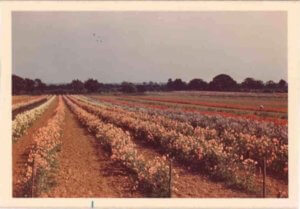
This farm ceased trading long ago but other smaller suppliers can still be found. My favourites at the moment are Matthewman’s Sweet Peas, based in Solihull and Roger Parson’s based in Chichester, although I keep finding new suppliers to try. In researching this article I found the website of another supplier Philip Johnson with some interesting varieties. Exploring the websites and online shops of these nurserymen is a treat and it is usually difficult to decide which to plump for.
Both these suppliers sell collections of sweet peas, a good choice for the beginner or if you simply can’t make up your mind. Chosen for scent, or exhibition or colour combination these collections usually make great value.
Choosing which sweet peas to grow – Scent, colour and structure – What is important to you?
Before choosing which sweet peas to grow it is worth thinking about what you’re trying to achieve by growing them. Is the most powerful scent your overriding priority or are you looking for a particular colour combination to fit into your garden scheme? Do you want to cut all your flowers for the vase and are you hoping to enter them in a show? Do you just want a good all-rounder with scent and a pretty structure?
Once you know what you’re looking for then scrolling through the myriad choices online is easier. If you like a strong scent then go for one where this is explicitly stated. Roger Parsons even ranks his varieties for scent from 0 to 6, although I have found very few varieties which have no scent at all.
I like to use sweet peas in the home and I also enter some in my local flower show each July. I therefore look for sweet peas described as “good for the show bench” or “good for exhibition”. These tend to be sweet peas that have long straight stems, good colour, good scent, and impactful flowers with multiple florets per stem. These factors make them perfect for a vase as well as for exhibition.
I’m also interested in introducing unusual colour combinations to the garden and trying new things so this year I’ll be growing some more unusual species varieties from Roger Parsons.
Colour variations and ripples and flaked patterns
As can be seen from the pictures here, there is a huge range of colours available, from pure whites and clotted creams, through reds, pinks and mauves in myriad colours, through to deep mauves and dark purples. Many combine two colours or contain interesting water-colour style washes.
Popular at the moment are the speckled varieties, a patterning described by growers as “striped” “rippled” or “flaked”. Stripes and ripples have a border or picotee edge whilst flaked varieties have markings that run across to the edge of the petal as if streaked in a single movement from a spray gun or paintbrush.
When I exhibited sweet peas for the first time at my local show, my selection included a burgundy speckled variety called ‘Nimbus’. I stood watching people walking by for several minutes and most people noticed and commented on this one.
I have since also grown two other similarly patterned flakes – purple ‘Night Sky’ and red speckled ‘Wilshire Ripple’ and this year am growing a flaked variety called ‘Margaret Gawler’ bought from Roger Parsons.
Old Fashioned sweet peas
These are the oldest varieties and tend to be small with a strong scent and interesting colour variations.
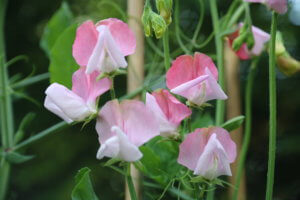
Old Fashioned Variety – Sweet Pea ‘Painted Lady’. It has pale pink lower petals and coral pink uppers and whilst the flowers are small, they pack a punch with their scent. They look fabulous amassed together in a vase
Modern grandiflora sweet peas
These varieties share the scent of Old-fashioned types but have slightly larger flowers
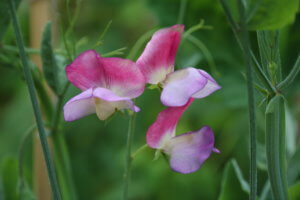
Modern Grandiflora Sweet Pea – ‘Spanish Dancer’ is a stunning variety where the upper petals are pink and the lower mauve. It has a colour-washed appearance like watercolours blended with a wet paintbrush. Looks incredible bunched together in a small bottle vase, where it will scent an entire room.
Spencer Sweet Peas
These are blowsy, with big frilly flowers, average scent, strong stems and multiple flowers per stem. These have been bred from a variety discovered in the early 20th century in the garden of Earl Spencer and are often good varieties to choose for the show bench.
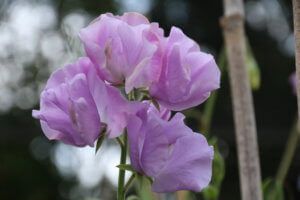
Spencer Variety – ‘Ethel Grace is a beautiful lavender-coloured Spencer variety with good frilly flowers. There’s something about the palette of lavender mauves, which gives them an ethereal quality, particularly in soft evening light.
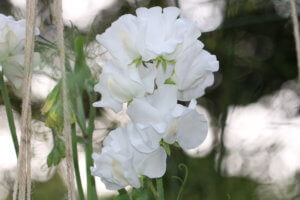
Spencer variety – ‘Timeless’. Every single one of these has at least four florets per stem and as you can see from the picture, this one has six. A blowsy flower anyway, the density of florets makes this variety incredibly impactful in the garden or in a vase.
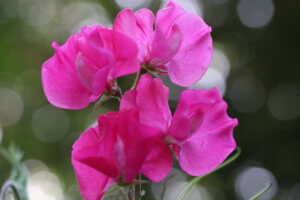
Spencer Variety – ‘Milly’. The photographs of this variety really don’t do it justice as the magenta pink colouring looks brash on film but softer and more lustrous in reality. It is named in memory of Milly Dowler
Species Sweet Peas
Various Lathyrus species from around the world as found in nature. Annual sweet pea species tend to have a short flowering season so are best sown in succession. If left to set seed they may spread in your garden and new plants may grow next year from these seeds.
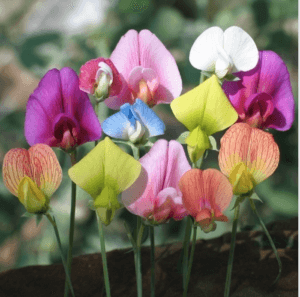
A selection of species sweet peas from Roger Parsons called ‘Spangles’. This collection includes the blue variety Lathyrus sativus. Photo courtesy of Roger Parsons Sweet Peas.
Species varieties also include perennial types which return each year. These are sometimes described as “everlasting sweet peas.”
Are you wondering how to provide suitable supports for your sweet peas in your garden or allotment? I grow my sweet peas along the edge of a path using a bamboo cane and string cordon structure. Click here for more information.
.

